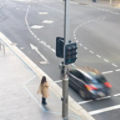Australia’s job market is showing signs of a gentle slowdown but remains in solid shape. New figures from the July labour force survey show employment rose by 24,500, while the unemployment rate edged down to 4.2 per cent - in line with expectations.
The participation rate, which measures how many people are working or looking for work, dipped slightly to 67.0 per cent.
These results suggest the labour market is evolving as expected by both CBA and the Reserve Bank of Australia (RBA), which continues to forecast a peak unemployment rate of 4.3 per cent by the end of the year.
“This release is about as close to expectations as it gets for a notoriously volatile data set,” said Harry Ottley, Economist at CommBank.
“Our outlook is in line with the RBA, and we don’t see current job market conditions putting any real pressure on inflation.”
Full-time jobs rebound, hours worked rise
Full-time employment rose by 60,500 in July, recovering from a fall in June. Part-time roles dropped by 35,900. Overall, employment is up 2 per cent over the past year — matching growth in the working-age population.
Hours worked also increased by 0.3 per cent in July, keeping pace with employment growth. The employment-to-population ratio held steady at 64.2 per cent, showing the labour market’s resilience.
What it means for interest rates
CommBank economists say there’s nothing in the July data to shift expectations for monetary policy. A rate cut in September is seen as unlikely, with the RBA expected to stick to its quarterly rhythm. A 25 basis point cut in November remains the base case.
With more data due before the next RBA meeting including August’s labour force survey, monthly inflation figures and Q2 GDP - CBA economists say it would take a material weakening in those numbers to prompt a change in direction.
To read Harry Ottley's full report, see here.



